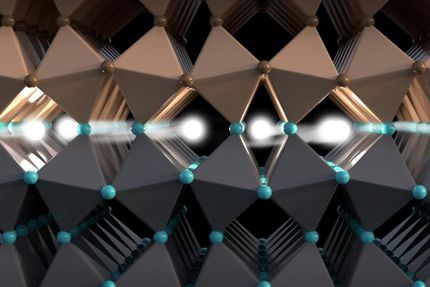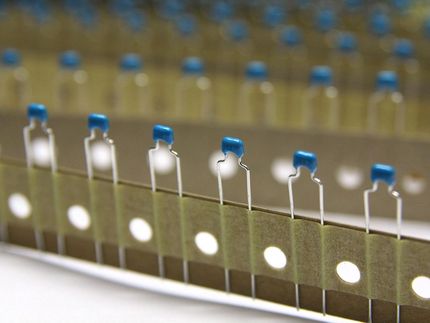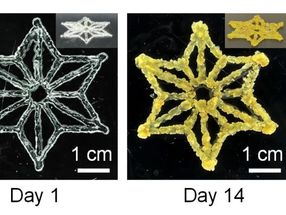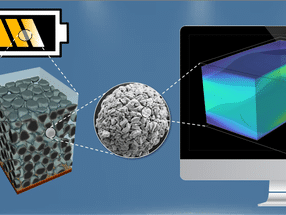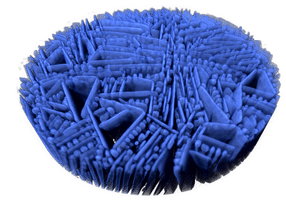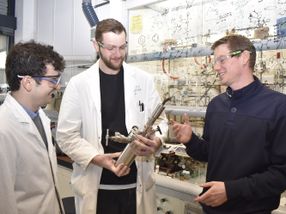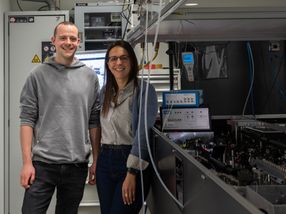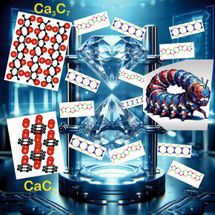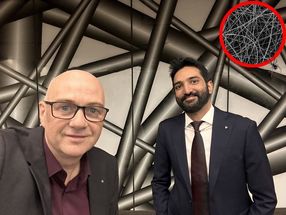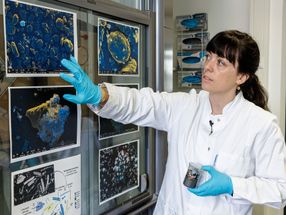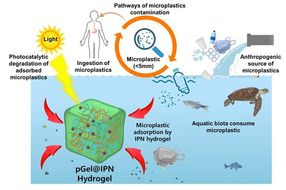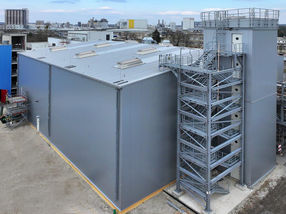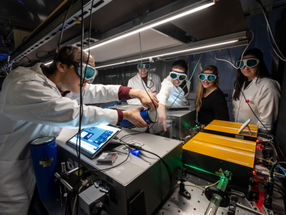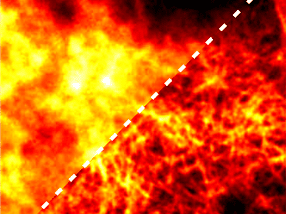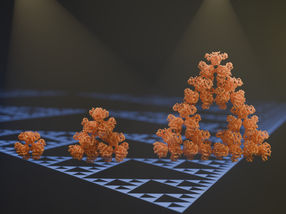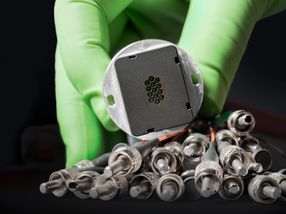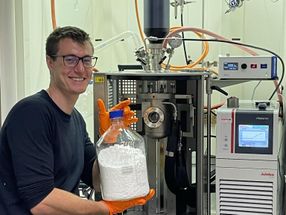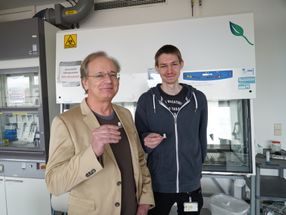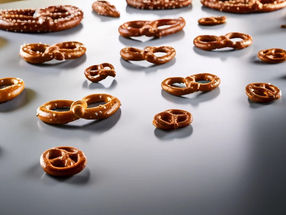Physicists defy conventional wisdom to identify ferroelectric material
A team of physicists has defied conventional wisdom by inducing stable ferroelectricity in a sheet of strontium titanate only a few nanometers thick.
The discovery could open new pathways to find new materials for nanotechnology devices, said Alexei Gruverman, a University of Nebraska-Lincoln physics and astronomy professor who worked on the research.
It also contradicts the expected behavior of ferroelectric materials, which normally lose stable ferroelectric polarization as they are made thinner.
"If you make a strontium titanate film very thin, all of a sudden it becomes ferroelectric at room temperature," Gruverman said. "If you make it thicker, ferroelectricity disappears. That's very strange, as it goes completely counter to all the common knowledge regarding the thickness effect on ferroelectric properties."
Gruverman and his team used piezoresponse force microscopy, a nanoscale testing technique that Gruverman pioneered, to confirm that stable and switchable polarization had occurred in ultrathin films of strontium titanate grown by a University of Wisconsin team led by Chang-Beom Eom.
Ferroelectricity, which is an electrical analog of ferromagnetism, is characterized by a stable electrical polarization which can be switched with the application of an electrical field. This quality makes ferroelectric materials useful for an array of electronic applications, such as computer memory chips. However, the materials' tendency to lose ferroelectric stability as they become thinner has limited their usefulness in nanoelectronics. Many scientists have been investigating techniques to create ferroelectric materials that can still be useful at nanometer scale dimensions.
Strontium titanate, often used as an insulating material in dielectric capacitors, isn't ordinarily a ferroelectric at room temperature. It is a perovskite, a family member of complex oxide materials with distinctive cubic crystal structures. Perovskites have long been recognized for a variety of useful physical properties, including superconductivity, ferromagnetism and ferroelectricity. In recent years, they have been studied for potential use in solar cells.
But crystals aren't always perfectly formed. If one out of each 100 strontium ions is missing from the cube-shaped strontium titanate crystal, it can create polarized nano-sized regions within the crystal.
Ordinarily, the material's bulk serves to isolate such polar nanoregions in an insulating matrix. Physicists at the University of Wisconsin, however, fabricated epitaxial films of strontium titanate, spread across a substrate of the same material, no thicker than the size of these polar nanoregions.
The electrical boundary conditions in the films drastically changed, forcing the polar nanoregions to interact between themselves and respond in a cooperative manner to the applied electric field. This allowed for the emergence of switchable and stable polarization, which the UNL team observed using piezoresponse force microscopy.
The effect was tested with mathematical simulations and electrical measurements, as well as through structural microscopic studies.
Gruverman said it is not yet known whether other perovskite materials will exhibit the same qualities.
"We don't know if this effect is unique to strontium titanate, but we hope that this approach can be extended to other perovskite dielectrics in which polar nanoregions are controlled by careful engineering of film defect structure," he said. "This may provide a path toward devices with reduced dimension where ferroelectricity is coupled to other properties, such as magnetism."
Original publication
Most read news
Original publication
D. Lee, H. Lu, Y. Gu, S.-Y. Choi, S.-D. Li, S. Ryu, T. R. Paudel, K. Song, E. Mikheev, S. Lee, S. Stemmer, D. A. Tenne, S. H. Oh, E. Y. Tsymbal, X. Wu, L.-Q. Chen, A. Gruverman and C. B. Eom; "Emergence of room-temperature ferroelectricity at reduced dimensions"; Science; 2015
Topics
Organizations
Other news from the department science

Get the chemical industry in your inbox
From now on, don't miss a thing: Our newsletter for the chemical industry, analytics, lab technology and process engineering brings you up to date every Tuesday and Thursday. The latest industry news, product highlights and innovations - compact and easy to understand in your inbox. Researched by us so you don't have to.
